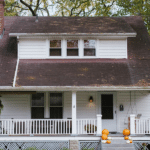In recent years, the shift towards sustainable living has become more than just a trend; it’s evolving into a fundamental change in how we envision our living spaces. Eco-friendly properties are at the forefront of this transformation, offering solutions that not only benefit the environment but also provide healthier living conditions and long-term financial savings for homeowners. Real estate professionals, including those like Michelle Kam, recognize the growing demand for sustainable properties and are adapting their portfolios to include homes that are both eco-friendly and innovative.
The Rise of Sustainable Housing
Sustainable housing is designed with the environment in mind, utilizing construction methods, materials, and technologies that reduce carbon footprints and promote energy efficiency. These homes are built to last, with a focus on renewable resources and minimal environmental impact. As awareness of climate change and environmental degradation increases, more homebuyers are seeking properties that align with their values of conservation and sustainability.
Benefits of Eco-Friendly Properties
Eco-friendly properties offer numerous benefits, extending beyond environmental conservation. They often result in lower utility bills due to more efficient use of energy and water. Additionally, sustainable homes can improve indoor air quality and reduce exposure to toxic materials, contributing to overall well-being. From a financial perspective, eco-friendly features can enhance property values and appeal, making them a smart investment for the future.
Key Features of Sustainable Homes
Energy Efficiency
One of the hallmarks of eco-friendly properties is energy efficiency. This can be achieved through various means such as high-quality insulation, energy-efficient windows, and doors, and the installation of energy-saving appliances. Solar panels are also a popular feature, allowing homeowners to generate their own clean energy and potentially reduce their energy bills significantly.
Sustainable Materials
The use of sustainable, non-toxic materials is another critical aspect of eco-friendly properties. This includes everything from the construction materials to the interior finishes. Bamboo flooring, recycled metal or glass, and low-VOC (volatile organic compounds) paints are just a few examples of sustainable materials that can be used to minimize environmental impact.
Water Conservation
Water conservation is an integral part of sustainable living. Eco-friendly properties often incorporate features such as low-flow faucets, dual-flush toilets, and drought-resistant landscaping to reduce water usage. Rainwater harvesting systems can also be installed to collect and reuse rainwater for irrigation and other non-potable uses.
Where Real Estate Professionals Fit In
As the demand for sustainable living grows, real estate professionals play a crucial role in promoting eco-friendly properties. By staying informed about the latest trends in sustainable housing and understanding the benefits of eco-friendly features, they can better serve clients who are looking for greener living options. Michelle Kam, for example, stays ahead of market trends by incorporating sustainable properties into her listings, recognizing their increasing appeal among environmentally conscious buyers.
Market Trends and Consumer Demand
Growing Awareness and Demand
Consumer awareness and demand for eco-friendly properties are on the rise. Many homebuyers are now prioritizing sustainability alongside traditional factors like location and price. This shift is partly driven by a growing understanding of environmental issues and a desire to contribute to a more sustainable future.
Government Incentives and Regulations
Government incentives and regulations are also playing a role in the rise of sustainable housing. Many regions offer tax incentives, rebates, or other benefits for homes with eco-friendly features or for homeowners who undertake green renovations. Additionally, building codes and regulations are increasingly incorporating sustainability standards, further encouraging the adoption of eco-friendly practices in construction.
Challenges and Opportunities
Overcoming Misconceptions
One challenge in the adoption of eco-friendly properties is overcoming misconceptions about cost and accessibility. While sustainable homes can have higher upfront costs due to the quality of materials and technologies used, the long-term savings and environmental benefits can outweigh these initial investments. Educating consumers about these long-term advantages is essential.
Innovation and Technology
The future of sustainable living is closely tied to innovation and technology. Advances in green building materials, renewable energy technologies, and smart home systems are continuously enhancing the efficiency and appeal of eco-friendly properties. These innovations not only make sustainable living more accessible but also open new opportunities for real estate professionals to market these properties.
Conclusion
Eco-friendly properties represent the future of sustainable living, offering a harmonious blend of environmental responsibility, health benefits, and financial savings. As the demand for sustainable housing continues to grow, the real estate industry, guided by forward-thinking professionals like Michelle Kam, is adapting to meet this demand with innovative solutions. The shift towards eco-friendly properties is not just a trend but a significant movement towards a more sustainable and conscientious way of living, shaping the future of real estate and the planet.
Published by: Nelly Chavez









